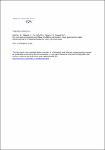Pre- and Post-Processing Workflow for Affinity Purification Mass Spectrometry Data
Fischer, Martina
Zilkenat, Susann
Gerlach, Roman
Wagner, Samuel
Renard, Bernhard Y.
The reliable detection of protein–protein interactions by affinity purification mass spectrometry (AP-MS) is crucial for the understanding of biological processes. Quantitative information can be used to separate truly interacting proteins from false-positives by contrasting counts of proteins binding to specific baits with counts of negative controls. Several approaches have been proposed for computing scores for potential interaction proteins, for example, the commonly used SAINT software. However, it remains a subjective decision where to set the cutoff score for candidate selection; furthermore, no precise control for the expected number of false-positives is provided. In related fields, successful data analysis strongly relies on statistical pre- and post-processing steps, which, so far, have played only a minor role in AP-MS data analysis. We introduce a complete workflow, embedding either the scoring method SAINT or alternatively a two-stage Poisson model into a pre- and post-processing framework. To this end, we investigate different normalization methods and apply a statistical filter adjusted to AP-MS data. Furthermore, we propose permutation and adjustment procedures, which allow the replacement of scores by statistical p values. The performance of the workflow is assessed on simulations as well as on a study focusing on interactions with the T3SS in Salmonella Typhimurium. Preprocessing methods significantly increase the number of detected truly interacting proteins, while a constant false-discovery rate is maintained. The software solution is freely available.
Dateien zu dieser Publikation
Keine Lizenzangabe

